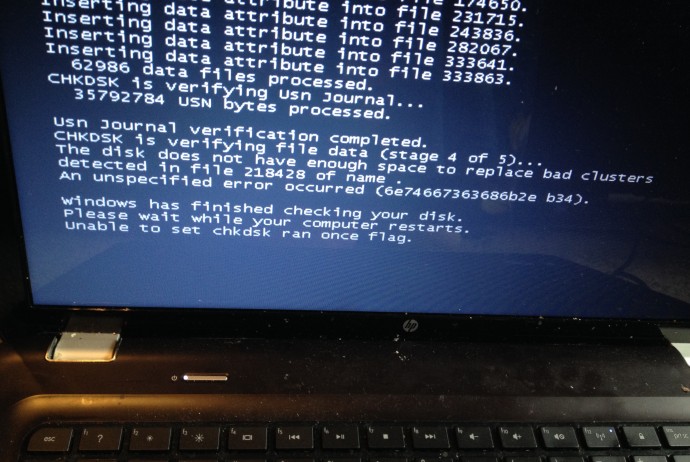I’d planned to end the week with a tiny update of miscellanea on emergency planning. I’m still doing that, but originally it was going to be upbeat, and it hasn’t quite turned out that way. Still, here’s your emergency planning quickie:
1. And lo, planning works!
Almost a year ago, I had a hard drive fail on me that left me without a computer for a day or two. Luckily, I was not mid- freelance assignment, and the awesome IT department at my workplace helped me out with the full-time assignment! Still, it left me realizing I needed to plan for catastrophic computer failure. What if this had happened on the due date of a freelance assignment? So, I immediately ordered a relatively inexpensive, non-customized backup laptop, which later became my main laptop for non-video use. I installed a new hard drive in the old laptop with help from IT, and I resolved to keep BOTH laptops up and running, just in case.
At the beginning of the week, Main Laptop’s screen failed! Luckily it was under warranty, so the fix is free, but it will still take a week. Am I freaking out? Nope. Thanks to having a second laptop that I’ve kept most of the same programs and templates on, when a client came along with a $750 job, I was able to accept with no problems. Yay planning!
2. Life happens. (Also, here’s a PayPal tip.)
Like I said at the beginning of this series, emergencies can and will happen to anyone at any time. This morning, I got the call that an emergency is happening, and I need to get my butt on a plane tomorrow morning. I think many of us have been there. So yep, this isn’t just something I blog about. It’s all real!
Also, here’s a fun fact about plane tickets: American Airlines will now let you buy tickets via PayPal if you buy through their site. This is important because if you have PayPal Credit added to your PayPal account, purchases above a certain price generally have suspended interest for six months (check at time of purchase). So as long as you’re responsible and keep track of how much you’ve paid each moth, you can pay for that expensive ticket in installments instead of all at once. Which, in cases of emergency, is pretty awesome.
3. A timely video.
Remember how last time I was talking about finding a trusted colleague for emergency backup? That would sure be useful right now for this $750 project that’s getting interrupted by my second emergency of the week. I think I’ll still be able to finish it, but this is a good reminder to me of why having trusted colleagues is so smart. And here’s a video Corinne just posted on exactly that. Go check it out!

